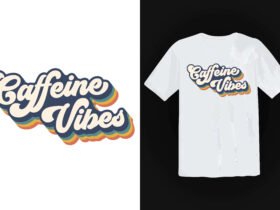WebGL, short for Web Graphics Library, is a powerful technology that allows developers to create interactive 3D and 2D graphics within any compatible web browser without the need for plugins. This open-standard web technology brings rich, hardware-accelerated graphics to the web, making it an essential tool for modern web development. In this article, we will explore how WebGL works and examine its various applications.
How WebGL Works
To understand how WebGL works, let’s delve into its core components and processes:
- Initialization: The process begins by creating a WebGL context from an HTML5 canvas element. This context serves as a gateway through which WebGL commands are issued.
- Shaders: WebGL relies heavily on shaders, which are small programs that run on the GPU (Graphics Processing Unit). Shaders are written in GLSL (OpenGL Shading Language) and consist of two main types: vertex shaders and fragment shaders. Vertex shaders process each vertex’s attributes, while fragment shaders compute the color and other attributes of each fragment (pixel).
- Buffers and Data: Data such as vertex positions, colors, and textures are stored in buffers. WebGL uses buffer objects to efficiently transfer and manage this data.
- Rendering Pipeline: Once the shaders are compiled and linked into a program, and the data is loaded into buffers, the rendering pipeline begins. This pipeline processes the vertices through the vertex shader, assembles them into geometric shapes, rasterizes the shapes into fragments, and finally processes the fragments through the fragment shader to produce the final image.
- Drawing: After setting up the shaders, buffers, and data, WebGL executes drawing commands to render the graphics onto the canvas.
What is WebGL?WebGL, as a technology, is designed to run on almost all modern web browsers, including Chrome, Firefox, Safari, and Edge. It leverages the power of the GPU, making it possible to render complex and computationally intensive graphics with high performance. By providing a standardized way to access the graphics hardware through the browser, WebGL has become a crucial tool for web developers and designers.
Applications of WebGL
WebGL has a wide range of applications across various industries, thanks to its versatility and power. Here are some of the primary uses of WebGL:
1. Web-Based Games
One of the most popular applications of WebGL is in the development of web-based games. By enabling high-quality 3D graphics within the browser, WebGL allows developers to create immersive gaming experiences without requiring users to download additional software or plugins.
2. Data Visualization
WebGL is widely used in data visualization, allowing for the creation of interactive charts, graphs, and maps. These visualizations can handle large datasets and complex interactions, making them invaluable for scientific research, financial analysis, and business intelligence.
3. Virtual and Augmented Reality
WebGL serves as the foundation for many virtual reality (VR) and augmented reality (AR) applications. By rendering 3D environments and objects directly in the browser, it enables users to experience VR and AR content seamlessly. WebVR, an API built on top of WebGL, further enhances these capabilities.
4. Architectural Visualization
Architects and designers use WebGL to create interactive 3D models of buildings and spaces. This allows clients to explore architectural designs in real-time, providing a better understanding of the space and design elements.
5. Education and Training
WebGL is increasingly being used in educational tools and training programs.
6. E-Commerce
In the e-commerce industry, WebGL is used to create 3D product views and interactive catalogs. This allows customers to examine products from all angles, enhancing the online shopping experience and potentially increasing sales.
7. Art and Design
Artists and designers leverage WebGL to create interactive art installations, animations, and visual effects. This technology allows for the creation of complex visual art that can be experienced directly in the browser.
Advantages of WebGL
The adoption of WebGL has grown significantly due to the numerous advantages it offers:
- Cross-Platform Compatibility: WebGL runs on all major web browsers, making it accessible to a broad audience without the need for additional software.
- Hardware Acceleration: By utilizing the GPU, WebGL can handle complex graphics and computations efficiently, providing high performance even for demanding applications.
- Interactivity: WebGL enables real-time interaction with 3D graphics, making it ideal for applications that require user input and engagement.
- Open Standard: As an open standard, WebGL is continually evolving and supported by a large community of developers, ensuring ongoing improvements and innovations.
- Integration with Web Technologies: WebGL integrates seamlessly with other web technologies such as HTML, CSS, and JavaScript, allowing for the creation of rich and dynamic web applications.
Conclusion
WebGL is a transformative technology that brings powerful, hardware-accelerated 3D graphics to the web. By understanding how WebGL works and exploring its various applications, businesses and developers can harness its potential to create engaging and interactive experiences. From gaming and data visualization to VR/AR and e-commerce, the versatility of WebGL makes it an essential tool for modern web development. As technology continues to advance, the role of WebGL in shaping the future of web graphics is only set to grow.














Leave a Reply